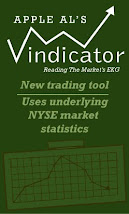Alternate #1 - low in place
Alternate #2 - one more leg yet to occur
Up until Friday I was favoring the idea that since Jan 20 a 4th wave has been in progress as in Alternate #2 - the action since the Jan 20 low was clearly not impulsive. But Friday's action clearly was impulsive and generated pretty strong market internals. This combined with the extremes seen on those internals at the Jan 20 low point mitigates in favor of Alternate #1.
Daily chart shows a triple zig-zag Primary W IV laid out from the Primary W III high of last May:
Primary Wave V will follow Primary IV and should be similar to Primary I in terms of time and price. Primary I lasted about two years and gained roughly 700 points:
One final note: the count for Primary I showed in the above chart has always seemed a little off - it's possible that Primary I ended at the point labeled Major W3. More on that at some point in the future, but if that's the case then there will be another 4th-5th wave sequence yet to occur before the ultimate top of the long term bull that commenced at the Mar, 2009 lows.












